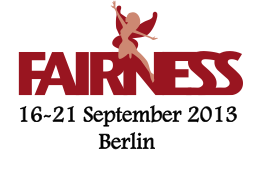Speaker
Mr
Lucas Burigo
(Frankfurt Institute for Advanced Studies, Goethe-Universität, 60438 Frankfurt am Main, Germany; Institut für Theoretische Physik, Goethe-Universität, 60438 Frankfurt am Main, Germany)
Description
The exposure to high charge and energy (HZE) particles is one of major concerns for humans during their missions in space. As radiation effects essentially depend on charge, mass and energy of cosmic-ray particles, the radiation quality has to be investigated, e.g. by means of microdosimetry measurements on the board of a spacecraft. In microdosimetry a Tissue Equivalent Proportional Counter (TEPC) is applied for measurement of energy deposition events in micrometer volumes. This technique is also used for characterization of radiation fields of protons and carbon ions in radiotherapy. The description of energy deposition on micrometer scale is fundamental for understanding of physical and biological effects due to high LET radiation. Several experiments at HIMAC in Japan and AGS in the USA used TEPC detectors for microdosimetry measurements of HZE particles in the energy range of 200A to 1000A MeV [1–3]. Similar measurements, but with heavy nuclei at higher energies are expected to be performed at the BIOMAT facility at FAIR [4]. These experiments will contribute to a better understanding of radiation effects induced by HZE particles. In our previous study [5] we benchmarked the electromagnetic models of Geant4 toolkit with microdosimetry data obtained with TEPCs for HZE particles. A proper description of nuclear reactions is also required for correct estimation of radiation effects in space missions and ion beam cancer therapy. Different hadronic models for cross sections and nuclear interactions are available in the Geant4 toolkit. Microdosimetry data for H, He, Li, C and Si ion beams in the energy range of 150A to 490A MeV were measured inside [6] and behind [7] an extended medium providing an indirect way to validate hadronic models. In this study we benchmark the hadronic models of Geant4 and evaluate the influence of nuclear fragmentation on microdosimetry spectra. The uncertainty in the estimation of radiation effects due to the choice of different models is investigated.
[1] B. B. Gersey et al., Radiat. Res. 157 (2002) 350–60
[2] S. Guetersloh et al., Radiat. Res. 161 (2004) 64–71
[3] P. J. Taddei et al., Radiat. Meas. 41 (2006) 1227–34
[4] Durante M 2006 BIOMAT. Biophysics collaboration: applications of relativistic heavy ions in
radiobiology and space radiation protection FAIR Newsletter 3 11-13
[5] L. Burigo et al., J. Phys.: Conf. Ser. 426 (2013) 012006 .
[6] G. Martino et al., Phys. Med. Biol. 55 (2010) 3441
[7] S. Tsuda et al., J. Radiat. Res. 53 (2012) 264
Primary author
Mr
Lucas Burigo
(Frankfurt Institute for Advanced Studies, Goethe-Universität, 60438 Frankfurt am Main, Germany; Institut für Theoretische Physik, Goethe-Universität, 60438 Frankfurt am Main, Germany)
Co-authors
Prof.
Igor Mishustin
(Frankfurt Institute for Advanced Studies, Goethe-Universität, 60438 Frankfurt am Main, Germany; Kurchatov Institute, Russian Research Center, 123182 Moscow, Russia)
Dr
Igor Pshenichnov
(Frankfurt Institute for Advanced Studies, Goethe-Universität, 60438 Frankfurt am Main, Germany; Institute for Nuclear Research, Russian Academy of Sciences, 117312 Moscow, Russia)
Prof.
Marcus Bleicher
(Frankfurt Institute for Advanced Studies, Goethe-Universität, 60438 Frankfurt am Main, Germany; Institut für Theoretische Physik, Goethe-Universität, 60438 Frankfurt am Main, Germany)

